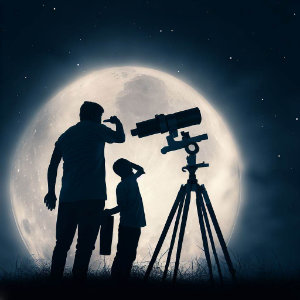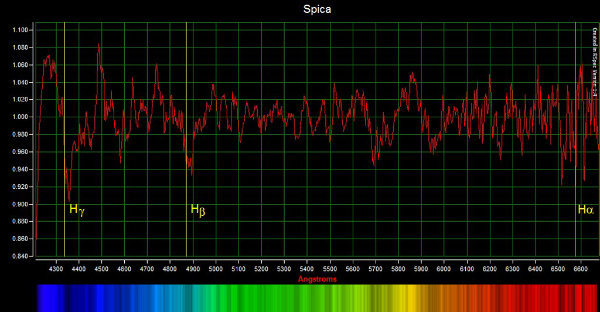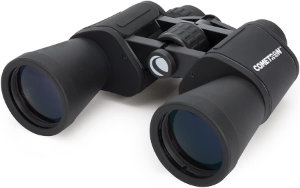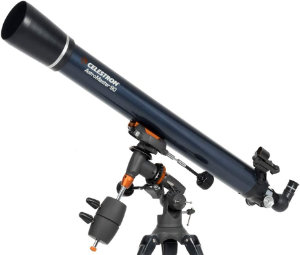
As an avid stargazer and someone born in the 1960s during the great space race, I have always been fascinated by the mysteries of the cosmos. However, like many others, I was hesitant to dive into astronomy due to the perceived high costs associated with telescopes and other equipment. But let me assure you, pursuing astronomy as a hobby doesn’t have to burn a hole in your pocket. In this guide, I will share with you my tips and tricks on how to explore the wonders of the cosmos without breaking the bank.
Benefits of pursuing astronomy as a hobby
Before we delve into the practical aspects, let’s first discuss the benefits of pursuing astronomy as a hobby. Apart from the sheer joy of observing celestial objects, astronomy offers numerous advantages. It allows you to develop patience, as certain celestial events can require long periods of observation. Additionally, stargazing provides a sense of awe and wonder, fostering a deeper appreciation for the vastness of the universe and our place within it. Furthermore, astronomy can be a great stress reliever, as it encourages you to step outside, breathe in the fresh air, and marvel at the beauty of the night sky.
Probably the greatest part is that you get to choose the benefits you want. Astronomy can be fun for just a few minutes every now and then to get a close look at the moon or observe the rings of Saturn. It can be strictly for special events such as eclipses. You could even use it as an excellent way to get yourself, or your child started down the road to serious scientific study.
The different ways you can use and enjoy astronomy are almost limitless.
Exploring the night sky without a telescope
Contrary to popular belief, you don’t always need a telescope to enjoy astronomy. There are numerous celestial objects and events visible to the naked eye or with the help of binoculars. The moon, for instance, offers a wealth of detail that can be observed with binoculars or even the naked eye. Additionally, meteor showers, such as the famous Perseids, provide breathtaking displays that can be enjoyed without any equipment. By familiarizing yourself with the night sky and learning to identify constellations and stars, you can have a rewarding stargazing experience without a telescope.
There are programs you can participate in to see how many objects you can view with just your eyes! A great place to start is this fantastic article The Eyes Have It — Deep-Sky Observing Without Equipment from Sky & Telescope magazine. This can be one of the most relaxing ways to experience astronomy and is a fantastic experience to share with someone.
From there you can graduate to a pair of binoculars or a telescope if you want to.
Selecting binoculars for astronomy
When selecting a pair of binoculars for astronomy the best pair to start with is a pair you already own. There is absolutely nothing wrong with using a pair that are completely unsuited to astronomy as they will at least give you an idea of what you can expect and how you want to improve with your next pair.
If you do not have a pair and are looking for something to start with on a budget, the Celestron 71198 Cometron 7×50 Binoculars. These will absolutely get you started in the right direction and even if you decide you want to stick with viewing the heavens with just your eyes or want to step up to a telescope, you spent too much.
Choosing the right budget telescope
A telescope is the primary tool for any aspiring astronomer. However, with the vast array of options available, selecting the right telescope within your budget can be overwhelming. The key is to prioritize your needs and understand the different types of telescopes available. Refractor telescopes, for example, provide crisp and clear images but can be more expensive per inch of aperture. On the other hand, reflector telescopes are generally more affordable but require occasional maintenance and adjustments. Do thorough research and read reviews to find a telescope that strikes the right balance between affordability and quality.
The absolute most important thing to consider when purchasing a telescope is how often you think you will use it. I don’t mean how often you will want to use it, but how often you will drag it out, set it up, adjust it, and actually use it.
You might think all telescopes are the same here, but they are not. The larger the telescope, the more you can see. Many people get suggestions of starting out with an 8″ Dobsonian telescope which is an excellent starter telescope. It is also over four feet long, almost fifty pounds, requires assembly every time, requires collimation frequently, and requires extensive cool-down times before use.
Cheap little refractors you often find in department stores for around $100 or less have the opposite problem of not being able to actually show you anything and they are extremely easy to break. Indeed an inexpensive pair of binoculars are far superior to these toys. All these telescopes will do is ruin the hobby for anyone who tries to use them.
One of the best beginner telescopes out there is the Celestron AstroMaster 90EQ Refractor Telescope. It is fast and easy to set up, has good quality optics, requires no collimation or maintenance, is large enough to view a lot of objects, comes with some nice software to help you find objects, and should last many years.
Tips for finding inexpensive astronomy equipment
Apart from telescopes, there are several other tools and accessories that can enhance your astronomy experience. Fortunately, there are ways to find these items without breaking the bank. One option is to borrow equipment from local astronomy clubs or organizations. Many enthusiasts are happy to lend their equipment to fellow stargazers, especially beginners. Another option is to look for second-hand equipment at flea markets, garage sales, or online classifieds. While these items may not be the latest models, they can still provide a fulfilling stargazing experience at a fraction of the cost.
If you have a knack for DIY projects, consider building your own astronomy equipment. For example, you can construct a simple star tracker to capture stunning night sky photographs with your smartphone. There are plenty of online resources and tutorials available to guide you through the process. By building your own equipment, you not only save money but also gain a deeper understanding of the mechanics behind stargazing. There are even books like Getting Started: Budget Astrophotography by Allan Hall that have huge sections of DIY projects in them that work with astronomy as well as astrophotography.
Buying used equipment
There is nothing wrong with used equipment, but there are some things you should think of before spending any money on garage sale finds or eBay auctions.

Of course, the biggest issue for beginners is, other than the seller’s word, how do you know something works as it should? There is very little more frustrating than buying something and having it not do what you expect it to do. When you are buying used, is it not meeting your expectations because you don’t know how to use it? Because it is not the right item and therefore can not meet your expectations? Or because it is defective?
If you buy new, you at least have the hope of some kind of support (which is why I recommend you purchase from larger manufacturers like Celestron, Meade, Orion, etc for your first telescope), and should there be a defect, some kind of return or refund policy.
Once you have been doing this a while, and you know enough to check them out fairly thoroughly, then flea markets, online auctions, and yard sales can be good sources. I would recommend you stay away from antique stores though, they are, in my experience, a little too proud of astronomy gear, and rarely know anything about the items.
Free or low-cost resources for astronomy enthusiasts
In the age of technology, there are plenty of free or low-cost resources available for astronomy enthusiasts. Smartphone apps like “SkyView” and “Star Walk” allow you to identify stars, planets, and constellations simply by pointing your phone towards the sky. These apps also provide valuable information about upcoming celestial events and stargazing tips. Additionally, websites like NASA’s “Astronomy Picture of the Day” feature stunning images and educational content that can deepen your knowledge of the cosmos. Public libraries often have a plethora of astronomy books and magazines that you can borrow for free, allowing you to expand your understanding of the universe without spending a dime.
One of the favorites among amateur astronomers is Stellarium, a planetarium program for Linux, MacOS, and Windows and they even have a version you can use right in your web browser! It is completely free and a fantastic program.
Joining astronomy clubs and communities
One of the best ways to immerse yourself in the world of astronomy is by joining local astronomy clubs and communities. These groups often organize stargazing events, workshops, and lectures that are open to members. By connecting with fellow enthusiasts, you can learn from experienced astronomers, share your observations, and discuss the latest discoveries. Furthermore, many astronomy clubs have access to observatories and telescopes, which can be utilized by members at little or no cost. The sense of camaraderie and shared passion within these communities is invaluable, making your astronomy journey even more enjoyable.
If you are in the United States, you can find a club close to you by visiting the interactive map at go-astronomy.com.
Budget-friendly astrophotography techniques
Astrophotography is a popular aspect of astronomy that allows you to capture stunning images of celestial objects. While it may seem like an expensive endeavor, there are budget-friendly techniques that can yield impressive results. One approach is to use a DSLR camera with a tripod and a telephoto lens. By taking long-exposure shots of the night sky, you can capture the beauty of stars, constellations, and even distant galaxies. Additionally, smartphone astrophotography has come a long way in recent years. With the help of apps and accessories like smartphone adapters, you can capture impressive images of the night sky using just your phone.
When you couple this with some DIY projects, you would be amazed at what you can create! Again, I would recommend Getting Started: Budget Astrophotography by Allan Hall if you want to get into astrophotography on a budget.
Scientific astronomy projects and experiments
For those who enjoy hands-on projects, there are countless astronomy projects and experiments that you can undertake. From simple observations like counting meteors during a shower, to spectroscopy, and even searching for never before seen asteroids, there is a huge array of activities that can allow you to contribute to science in a real way.

One of my favorite books here is Scientific Astrophotography: How Amateurs Can Generate and Use Professional Imaging Data by Gerald R. Hubbell. While this is far above beginner level, it is a great reference to give you an idea of where you might want to go.
Conclusion: Embrace the wonders of the cosmos without breaking the bank
Pursuing astronomy as a hobby doesn’t have to be an expensive endeavor. With the right approach and a little creativity, you can explore the wonders of the cosmos on a budget. Whether it’s finding a budget telescope, utilizing free resources, or engaging in DIY projects, there are numerous ways to immerse yourself in the beauty of the night sky without emptying your wallet. So go ahead, embrace the wonders of the cosmos, and let your passion for astronomy take flight. Happy stargazing!


